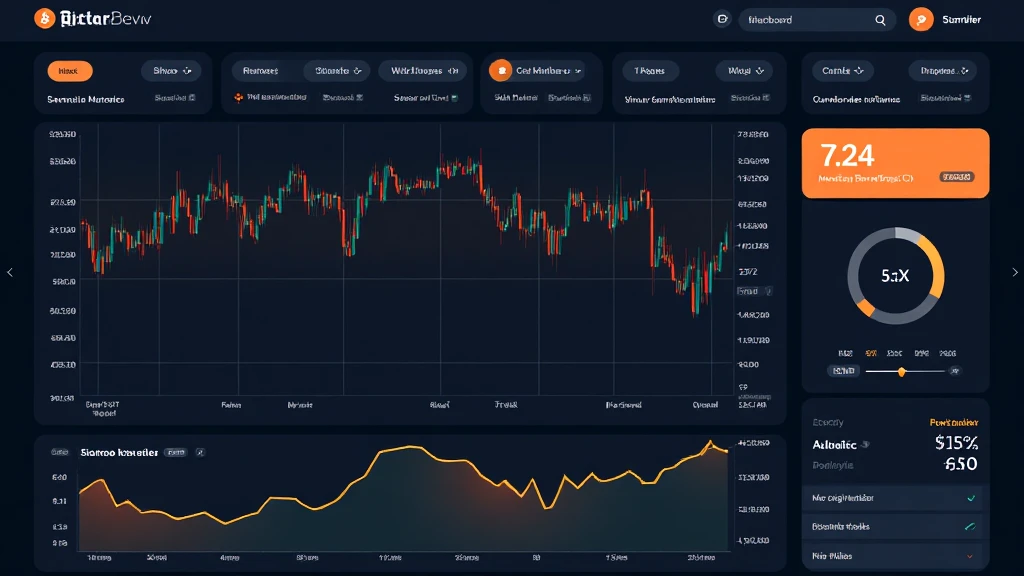Introduction: The Rising Need for Energy Efficiency in Bitcoin Blockchain
With the cryptocurrency market evolving, the urgency to address energy efficiency has never been more pressing. In 2024 alone, estimates suggest that over $3 billion was spent on energy consumption by Bitcoin miners globally. As the market expands, so does the environmental impact, leading to growing scrutiny and demands for more sustainable practices.
This article explores the intersection of Bitcoin, blockchain technology, and energy efficiency, providing insights into how these elements are crucial for the future of digital assets. We’ll delve into how Bitcoin can innovate towards a more energy-efficient model, aligning with global sustainability goals.
Understanding Bitcoin Blockchain and Its Energy Demands
Bitcoin operates on a decentralized blockchain, which relies on a mechanism known as Proof of Work (PoW). This method requires miners to solve complex mathematical problems to validate transactions. While this secures the network, it also consumes vast amounts of energy, comparable to that of small countries.

- Energy Consumption: The Bitcoin network’s energy consumption is close to that of Ukraine, raising concerns about its sustainability.
- Carbon Footprint: A significant portion of Bitcoin mining uses fossil fuels, contributing to environmental degradation.
According to a recent report by the Cambridge Centre for Alternative Finance, the energy consumption of Bitcoin mining is projected to exceed 400 TWh per year by 2025 unless significant changes are made.
Energy Efficiency Solutions in Bitcoin Mining
As awareness of Bitcoin’s energy footprint increases, several methodologies have emerged to enhance energy efficiency. Here are some key strategies:
1. Renewable Energy Sources
Switching to renewable energy sources like wind, solar, and hydropower can drastically reduce the carbon footprint of Bitcoin mining operations. For example, numerous mining farms in the United States and China are shifting towards hydroelectric power to decrease their environmental impact.
2. Advanced Mining Hardware
Upgrading mining equipment can significantly improve energy efficiency. Modern ASIC (Application-Specific Integrated Circuit) miners are designed to consume less electricity while maximizing hash rates, making them a smart investment for miners looking to reduce energy use.
3. Off-Peak Mining
Mining during off-peak hours when energy rates are lower can decrease operational costs and lessen the load on the energy grid. This strategy is gaining traction among miners in regions with time-of-use electricity pricing.
4. Energy Recycling
Some innovative projects are exploring ways to capture and reuse the heat generated by mining rigs. By utilizing this heat for nearby operations (like greenhouses), miners can increase overall efficiency and contribute positively to local economies.
Case Studies of Energy-Efficient Mining Operations
Several companies in the market are setting examples of good practices in energy efficiency, leading the way towards a more sustainable approach to Bitcoin mining.
1. Bitfury
Bitfury, one of the largest blockchain technology firms, integrates renewable energy into its mining operations. Their facilities utilize up to 80% renewable energy, aiming to completely offset their carbon emissions by 2025.
2. Marathon Digital Holdings
Marathon has committed to operating a carbon-neutral Bitcoin mining facility in North America. This ambitious venture focuses on renewable energy sources, aiming to power operations with 100% carbon-free energy.
Future Trends: A Shift Towards Sustainable Blockchain Solutions
The urgency for energy-efficient solutions is leading to innovation across the blockchain industry. Emerging trends include:
1. Transitioning to Proof of Stake (PoS)
Ethereum’s shift from Proof of Work to Proof of Stake represents a significant movement towards energy efficiency in blockchain technology. While Bitcoin maintains its PoW basis, discussions on similar transitions have become increasingly relevant.
2. Layer 2 Solutions
Protocols like Lightning Network improve the scalability of Bitcoin transactions and reduce energy costs per transaction as they allow for off-chain transactions.
The Role of Regulation in Promoting Energy Efficiency
Governments are beginning to acknowledge the energy consumption concerns surrounding cryptocurrencies. Regulatory frameworks may soon force mining operations to adopt greener practices. Some potential measures include:
- Incentives for Renewable Energy Use: Tax credits and subsidies for miners using renewable energy.
- Mandatory Carbon Footprint Reporting: Regulation requiring miners to disclose their environmental impact.
According to a report from Blockchain.com, it’s expected that up to 67% of mining operations could be using renewable energy by 2025 if regulations support green initiatives.
Challenges Ahead: Balancing Growth and Sustainability
While the call for energy efficiency grows louder, the challenges remain complex. Here are some considerations:
1. Economic Factors
The cost of renewable energy technologies may present barriers for smaller miners and startups, thus creating disparities in the industry.
2. Technological Limitations
Many jurisdictions lack the necessary infrastructure to support large-scale renewable energy projects, impacting the ability of miners to shift effectively.
Conclusion: A Sustainable Path Forward
In conclusion, the intersection of Bitcoin, blockchain technology, and energy efficiency presents both challenges and opportunities. The industry must collectively pursue innovative solutions and prioritize sustainable practices to ensure its long-term viability. With a focused approach on reducing energy consumption and carbon footprints, Bitcoin can transform its image into one of responsibility and sustainability.
As regional markets like Vietnam witness a surge in cryptocurrency adoption, it is essential to consider local energy dynamics and the potential for innovation. As of 2023, Vietnam boasts a user growth rate of over 250% in cryptocurrency adoption, emphasizing the need for sustainable practices in this burgeoning market.
As we move towards 2025 and beyond, embracing energy-efficient practices will not only enhance the reputation of Bitcoin but also align with global environmental goals and initiatives. Let’s ensure that the future of digital assets remains bright, green, and sustainable.
For more insights on blockchain energy efficiency and other crypto-related topics, visit mycryptodictionary.





